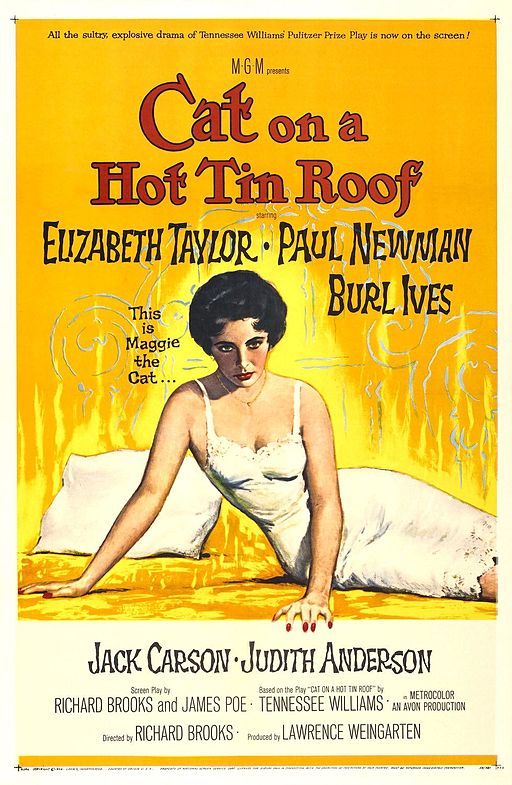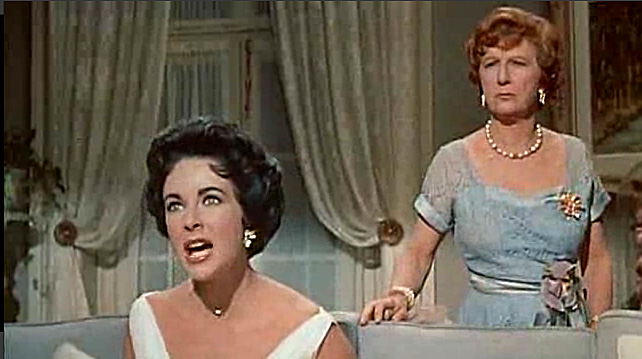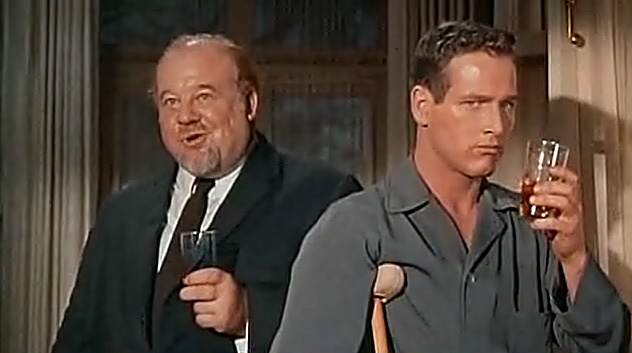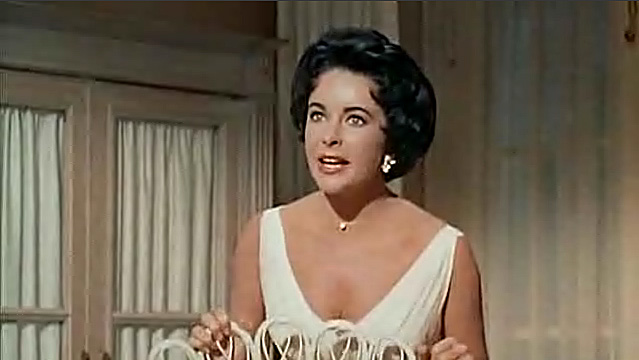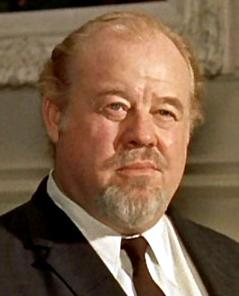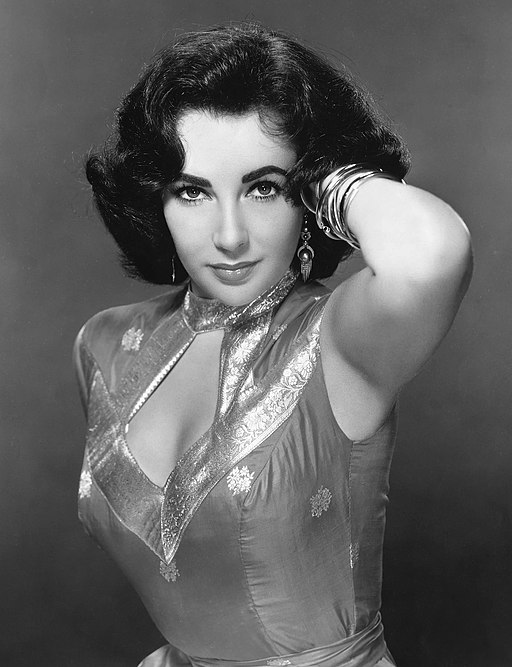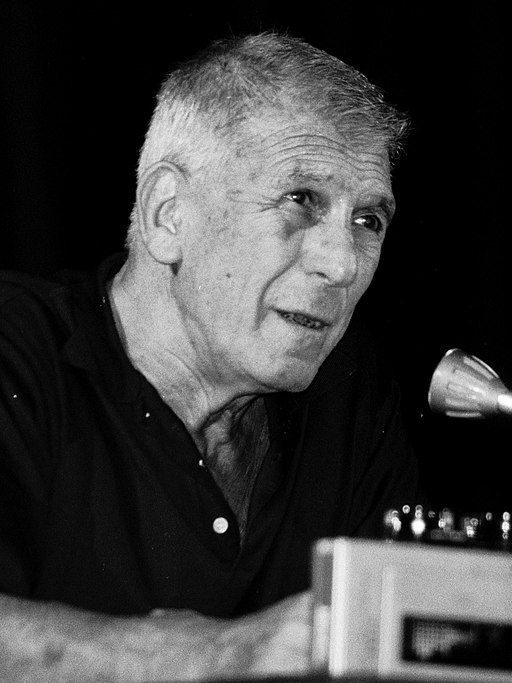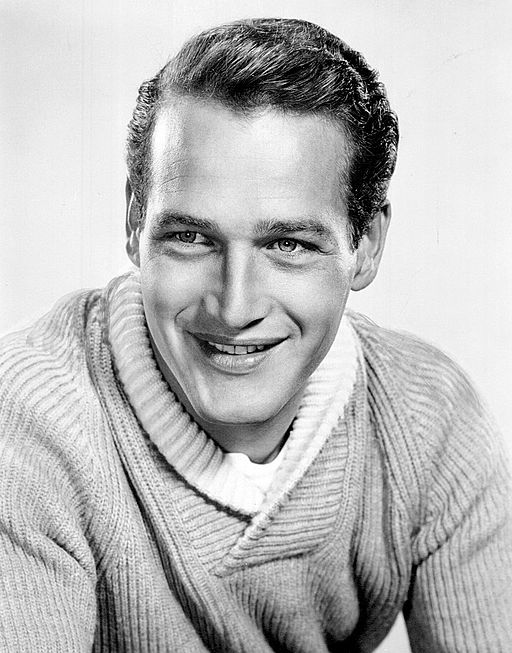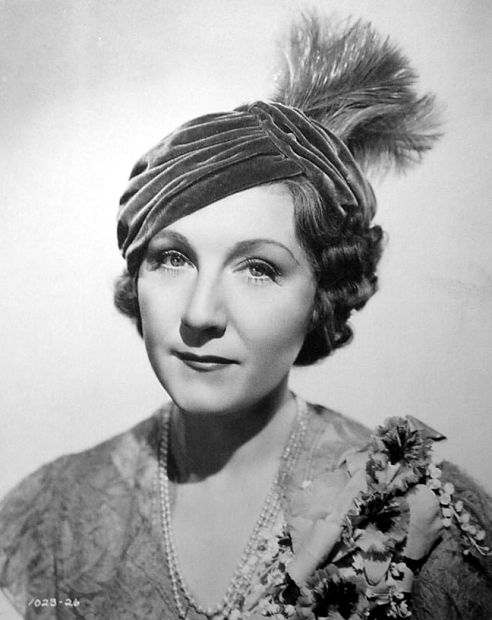Cat on a Hot Tin Roof - 1958
back| Released by | Metro-Goldwyn-Mayer |
| Director | Richard Brooks |
| Producer | Lawrence Weingarten |
| Script | Richard Brooks and James Poe, based on the play by Tennessee Williams |
| Cinematography | William H. Daniels |
| Music by | Charles Wolcott |
| Running time | 108 minutes |
| Film budget | $2.3 million |
| Box office sales | $17.57 million (in the United States and Canada) |
| Main cast | Elizabeth Taylor - Paul Newman - Burl Ives - Jack Carson - Judith Anderson |
Cat on a Hot Tin Roof – 1958
A searing exploration of truth, mendacity, and unfulfilled desires
"Cat on a Hot Tin Roof" is a drama film that delves into the emotional turmoil within a Southern family. The film is noted for its powerful performances, particularly by Elizabeth Taylor and Paul Newman.
The story revolves around the complex relationships and secrets within the Pollitt family, with themes of mendacity, sexuality, repression, and death. Though the film adaptation is somewhat sanitized compared to the original play, it still captures the essence of Tennessee Williams' intense and provocative drama. The film was a commercial success and received several Academy Award nominations, further cementing its status as a classic in American cinema.
Related
Cat on a Hot Tin Roof – A full analysis
"Cat on a Hot Tin Roof" (1958), directed by Richard Brooks, is a profound cinematic adaptation of Tennessee Williams' Pulitzer Prize-winning play. The film is a potent exploration of human emotions, familial tensions, and the unspoken truths that lie beneath the surface of domestic life. Here’s a detailed analysis:
Narrative and Themes:
- Family Dynamics and Dysfunction: At its core, the film delves into the complexities of the Pollitt family, bringing to light themes of mendacity, greed, and desperation. The strained relationship between Brick (Paul Newman) and his father, Big Daddy (Burl Ives), forms the crux of the narrative, underscored by a deep-seated lack of communication and understanding.
- Repression and Desire: The film tackles the subjects of sexual repression and unfulfilled desire, particularly through the character of Maggie (Elizabeth Taylor). Her frustration with Brick's indifference and the couple's childlessness is a recurring theme, reflecting the broader societal constraints of the time.
- Illusion vs. Reality: The characters often grapple with the illusions they have built for themselves, contrasting sharply with the harsh truths they must face. This theme is epitomized in Big Daddy's confrontation with his mortality and Brick's struggle with his past and alcoholism.
Characterization:
- Brick: Paul Newman's portrayal of Brick is nuanced, capturing the character's internal turmoil, guilt, and detachment. Brick is a man haunted by the ghost of his past, particularly the death of his friend Skipper, which is a source of unresolved grief and confusion.
- Maggie: Elizabeth Taylor delivers a powerful performance as Maggie. Her character is strong, determined, and deeply in love with Brick, despite his coldness. Maggie's resilience and desire to break through to Brick, while securing their place in Big Daddy's will, add layers to her character.
- Big Daddy: Burl Ives’ portrayal of Big Daddy is commanding and complex. He is a self-made man facing his own mortality, trying to come to terms with the lies and pretenses in his family.
Direction and Cinematography:
- Richard Brooks’ direction is notable for how it captures the intense emotional drama and the claustrophobic atmosphere of the family's estate. Though the film is less explicit than the play, Brooks manages to convey the underlying tensions effectively.
- Cinematographer William H. Daniels uses lighting and framing to enhance the emotional depth and tension, making the family's estate feel both grand and suffocating.
Adaptation from the Play:
- While the film adaptation softens some of the play's more controversial aspects (notably Brick's implied homosexual relationship with Skipper and Maggie's more overt sexuality), it retains the play's emotional intensity and dramatic conflicts.
Impact and Legacy:
- "Cat on a Hot Tin Roof" was critically acclaimed and became a significant commercial success. The film’s portrayal of complex emotional and familial issues was groundbreaking for its time. It received multiple Academy Award nominations, cementing its status as a classic in American cinema.
In conclusion, "Cat on a Hot Tin Roof" is a masterful exploration of human emotions, family secrets, and the existential dilemmas that plague individuals. The performances, direction, and adaptation of the source material work in harmony to create a film that is both provocative and deeply moving, retaining its power and relevance decades after its release.
Full cast “Cat on a Hot Tin Roof”:
- Elizabeth Taylor as Margaret "Maggie" Pollitt
- Paul Newman as Brick Pollitt
- Burl Ives as Harvey "Big Daddy" Pollitt
- Judith Anderson as Ida "Big Mama" Pollitt
- Jack Carson as Cooper "Gooper" Pollitt
- Madeleine Sherwood as Mae Flynn Pollitt
- Larry Gates as Dr. Baugh
- Vaughn Taylor as Deacon Davis
- Zelda Cleaver as Sookey
- Brian Corcoran as Buster Pollitt
- Hugh Corcoran as Sonny Pollitt
- Patty Ann Gerrity as Dixie Pollitt
- Bobby Johnson as Pollitt Child
- Deborah Miller as Pollitt Child
- Rusty Stevens as Pollitt Child
Analysis of the direction of Richard Brooks:
Richard Brooks' direction of "Cat on a Hot Tin Roof" (1958) is a notable example of his ability to adapt complex literary works into compelling cinema. His interpretation of Tennessee Williams' play is both a faithful rendition and a distinct cinematic creation. Here's an analysis of Brooks' directorial approach in this film:
Adaptation of the Source Material
Brooks, known for his skill in adapting literary works, made significant changes to Williams' original play to comply with the motion picture production code of the time. He toned down the play's explicit references to homosexuality and other adult themes. Despite these alterations, Brooks managed to retain the essence of the story's emotional intensity and its exploration of deep-seated family conflicts.
Characterization and Performances
Brooks' direction drew out powerful performances from his cast, particularly Elizabeth Taylor, Paul Newman, and Burl Ives. He navigated the complex dynamics between characters, capturing the nuanced relationships and underlying tensions. Brooks’ ability to elicit emotionally charged performances added depth to the characters and made their internal struggles palpable to the audience.
Atmospheric Tension
Brooks successfully created a tense and suffocating atmosphere, crucial for a story predominantly set in a single location — the Pollitt family's estate. His use of close-ups and tight framing intensified the feeling of entrapment that the characters experienced, both physically and emotionally.
Visual Storytelling
While maintaining the dialogue-driven nature of the play, Brooks utilized visual storytelling to enhance the narrative. His composition of scenes, along with the cinematography by William Daniels, added a layer of visual symbolism that complemented the script, further emphasizing the themes of deceit, desire, and despair.
Balancing Themes
Brooks navigated the play's central themes — truth and lie, life and death, love and resentment — with a keen understanding of their interplay. He managed to balance these elements without letting one overshadow the other, maintaining the story’s complexity.
Impact and Legacy
Under Brooks' direction, "Cat on a Hot Tin Roof" became more than just a film adaptation of a stage play; it was a significant cinematic work in its own right. Though some critics and audiences noted the changes from the original play, the film was a commercial success and is remembered for its emotional intensity and stellar performances.
Analysis of the performance of Elizabeth Taylor as Maggie Pollitt:
Elizabeth Taylor's portrayal of Maggie in "Cat on a Hot Tin Roof" is one of her most iconic performances, showcasing her ability to bring depth and complexity to a challenging role.
Character Complexity
Maggie, often referred to as "Maggie the Cat," is a multifaceted character full of contradictions. She is at once strong, vulnerable, seductive, and desperate. Taylor captures this complexity with a performance that is both nuanced and powerful. She portrays Maggie as a woman fighting for her marriage and her place in a family that is teeming with secrets and lies.
Emotional Intensity
One of the hallmarks of Taylor's performance is the emotional intensity she brings to the role. Her portrayal of Maggie's loneliness, frustration, and unrequited love for Brick (played by Paul Newman) is palpable. Taylor skillfully conveys the depth of Maggie's feelings, making her a sympathetic character despite her flaws and manipulations.
Seductive yet Strong
Taylor's Maggie is not just a seductress; she is a survivor. In a household dominated by men and overshadowed by the larger-than-life figure of Big Daddy, Maggie asserts herself not just through her sexuality but through her wit and intelligence. Taylor balances the character's seductive qualities with a sense of strength and resilience.
Interplay with Other Characters
The dynamics between Maggie and Brick form the emotional core of the film. Taylor's interactions with Newman are charged with tension and unspoken regret. Additionally, her confrontations with Big Daddy, played by Burl Ives, add another layer to her performance, as she holds her ground against his domineering presence.
Vulnerability
Taylor brings a sense of vulnerability to Maggie, particularly in her fear of losing Brick and her desire to secure their future. This vulnerability makes her more relatable and adds to the complexity of her character.
Depiction of Femininity
Through Maggie, Taylor explores the themes of femininity and power. In a time when women’s roles were often limited, Maggie's character challenges the traditional expectations of women, both in her marriage and in society.
In conclusion, Elizabeth Taylor's performance as Maggie in "Cat on a Hot Tin Roof" is a testament to her talent as an actress. She brings to life a character who is richly layered and full of contradictions. Her portrayal of Maggie is not only captivating but also significant for its depiction of a strong, complex woman navigating the challenges of love, marriage, and societal expectations in the mid-20th century.
Analysis of Burl Ives role as Big Daddy:
Burl Ives’ portrayal of Big Daddy Pollitt in "Cat on a Hot Tin Roof" stands out as a commanding and multifaceted performance, crucial to the film's exploration of family dynamics, truth, and illusion. His character is the patriarch of the Pollitt family, around whom much of the drama revolves.
Dominant Patriarchal Presence
Ives portrays Big Daddy as a larger-than-life character, the quintessential Southern patriarch whose presence and voice command attention whenever he is on screen. His dominance over the family is palpable, and Ives brings a robust physicality and assertiveness to the role that underscores Big Daddy’s authority and influence.
Complex Characterization
Despite his tough exterior, Big Daddy is a complex character with vulnerabilities and fears, particularly regarding his health and mortality. Ives skillfully navigates these nuances, shifting from a domineering figure to one who is introspective and vulnerable, especially in scenes where he confronts his mortality and the lies that pervade his family.
Emotional Depth
One of the most compelling aspects of Ives’ performance is the emotional depth he brings to the character. His interactions with Brick (Paul Newman) are particularly telling, as he attempts to break through his son's emotional barriers. In these moments, Ives’ Big Daddy reveals his own frustrations, disappointments, and a desperate desire for honesty and connection with his son.
Symbol of Truth and Illusion
Big Daddy serves as a symbol of both truth and illusion. He is a man who has built an empire on hard truths, yet he finds himself surrounded by lies within his own family. Ives portrays this dichotomy effectively, particularly in scenes where he cuts through pretenses and confronts the mendacity of those around him.
Interplay with Other Characters
The dynamics between Big Daddy and other characters, especially Maggie (Elizabeth Taylor) and his wife, Big Mama (Judith Anderson), are critical in understanding the family’s dysfunction. Ives’ portrayal shows a man who is at times dismissive and cruel, yet also capable of introspection and change.
Physical and Vocal Performance
Ives uses his physicality and distinctive voice to great effect, embodying the character's strength and fragility. His booming voice, in particular, is used to convey authority, but also, in quieter moments, to reveal Big Daddy's deeper fears and doubts.
In conclusion, Burl Ives' performance as Big Daddy in "Cat on a Hot Tin Roof" is a powerful portrayal of a man grappling with his mortality, legacy, and the complexities of familial relationships. Ives brings a depth and humanity to the character that resonates throughout the film, making Big Daddy a memorable and integral part of this classic cinematic adaptation.
Differences between movie and play:
"Cat on a Hot Tin Roof" by Tennessee Williams is a prime example of how adaptations can differ significantly when a play is translated into a film. The 1958 movie directed by Richard Brooks, while retaining the core themes and characters of Williams' original play, made notable changes, primarily due to the cultural and censorship constraints of the time.
Homosexual Undertones:
- Play: One of the most significant elements in the play is the implication of protagonist Brick's homosexual feelings towards his friend Skipper, which is a central theme contributing to his turmoil and his relationship with Maggie.
- Film: The film, however, significantly downplays these undertones. The Hays Code, which dictated moral censorship in Hollywood at the time, prohibited explicit references to homosexuality. As a result, the film attributes Brick's distress more to general guilt and shame associated with his friend's death.
Ending:
- Play: The play has an open, somewhat ambiguous ending, with the conflicts between characters left unresolved, emphasizing the play's themes of mendacity and disillusionment.
- Film: The movie opts for a more conclusive and optimistic ending. It suggests a reconciliation between Brick and Maggie, aligning with Hollywood's preference for closure and resolution in narratives.
Character Portrayal:
- Play: Characters in the play are often portrayed with more complexity and moral ambiguity. Big Daddy's character in the play is more coarse and brutal than in the film.
- Film: The film tends to soften some of these characteristics. For instance, Big Daddy, while still portrayed as domineering, is somewhat more sympathetic in the movie.
Content and Dialogue:
- Play: Williams' original text is more explicit and raw in its dialogue and content, dealing openly with themes like alcoholism, greed, and deception.
- Film: The film adapts the dialogue and content to be less provocative, in line with the censorship norms of the era.
Tone and Atmosphere:
- Play: The play’s tone is generally darker and more cynical, reflecting Williams’ view of the complexities and harshness of human relationships.
- Film: While the film retains a degree of this darkness, it is somewhat tempered by the changes in character development and plot resolution.
Impact of the Differences:
These differences had a significant impact on how the story was perceived. The film, while successful and critically acclaimed, presents a more sanitized and less controversial version of Williams' narrative. Some critics and audiences view the film as a diluted adaptation, missing the playwright's raw and unflinching portrayal of human flaws and societal issues.
However, others appreciate the film as a standalone work that captures the essence of the play's drama and emotion, even within the constraints of its time.
In conclusion, "Cat on a Hot Tin Roof" in its film adaptation represents the challenges and compromises involved in translating a complex, provocative stage play to a film in the mid-20th century, balancing artistic integrity with the prevailing norms and regulations of the film industry.
Remarkable quotes from the film “Cat on a Hot Tin Roof”:
- Maggie (Elizabeth Taylor): "I'm not living with you. We occupy the same cage, that's all."
- Big Daddy (Burl Ives): "What's that smell in this room? Didn't you notice it, Brick? Didn't you notice a powerful and obnoxious odor of mendacity in this room?"
- Brick (Paul Newman): "You know the sound of two hands clapping, Big Daddy? What's the sound of one hand clapping?"
- Maggie: "I don't mind making a fool of myself over you." Brick: "Well, I mind. I feel embarrassed for you." Maggie: "Feel embarrassed? But I can't live on this way." Brick: "You agreed to accept that condition." Maggie: "I know I did. But I can't, I can't!"
- Big Daddy: "Life is important. There's nothing else to hold onto. A man that's got to have something to hold onto, don't you realize that?"
- Maggie: "Truth! Truth! Everybody keeps hollerin' about the truth. Well, the truth is as dirty as lies."
- Big Daddy: "The human animal is a beast that dies but the fact that he's dying don't give him pity for others, no sir."
- Maggie: "You can be young without money, but you can't be old without it."
- Brick: "Sometimes I don't know whether to laugh or cry."
- Maggie: "I'm not gonna give up, and I'm not gonna let you give up."
Awards and Nominations:
Academy Awards (Oscars) 1959:
- Nominated for Best Picture: The film was nominated, but the award went to "Gigi."
- Nominated for Best Director: Richard Brooks received a nomination for his work on the film.
- Nominated for Best Actor in a Leading Role: Paul Newman was nominated for his portrayal of Brick Pollitt.
- Nominated for Best Actress in a Leading Role: Elizabeth Taylor was nominated for her role as Maggie Pollitt.
- Nominated for Best Writing, Screenplay Based on Material from Another Medium: Richard Brooks and James Poe were nominated for their adaptation of Tennessee Williams' play.
- Nominated for Best Cinematography, Color: William H. Daniels received a nomination for his work on the film.
Golden Globe Awards:
- Won Best Actress in a Motion Picture Drama: Elizabeth Taylor won for her role as Maggie Pollitt.
BAFTA Awards:
- Nominated for Best Foreign Actress: Elizabeth Taylor received a nomination for her role.
Other Recognitions:
- The film was also recognized in other award circles and by film critics for its performances, direction, and screenplay adaptation.

